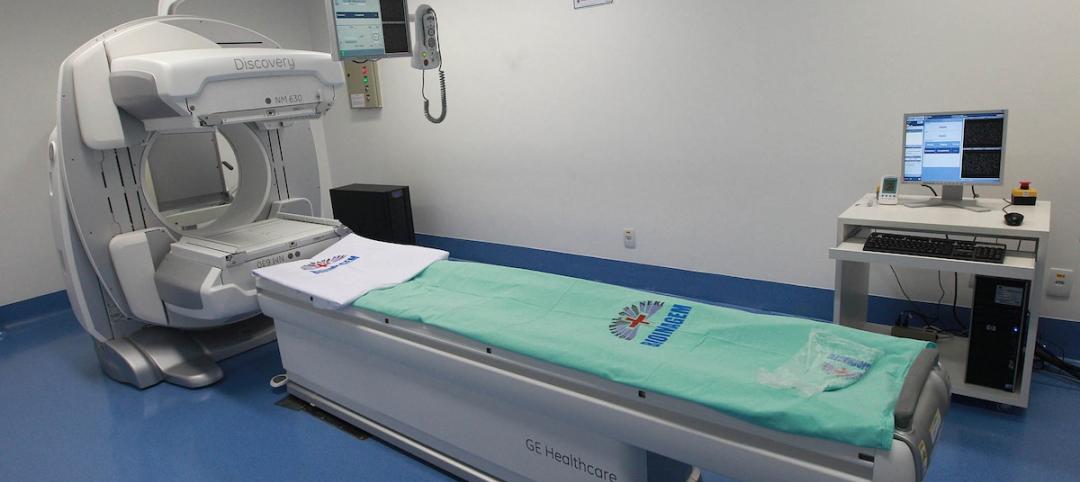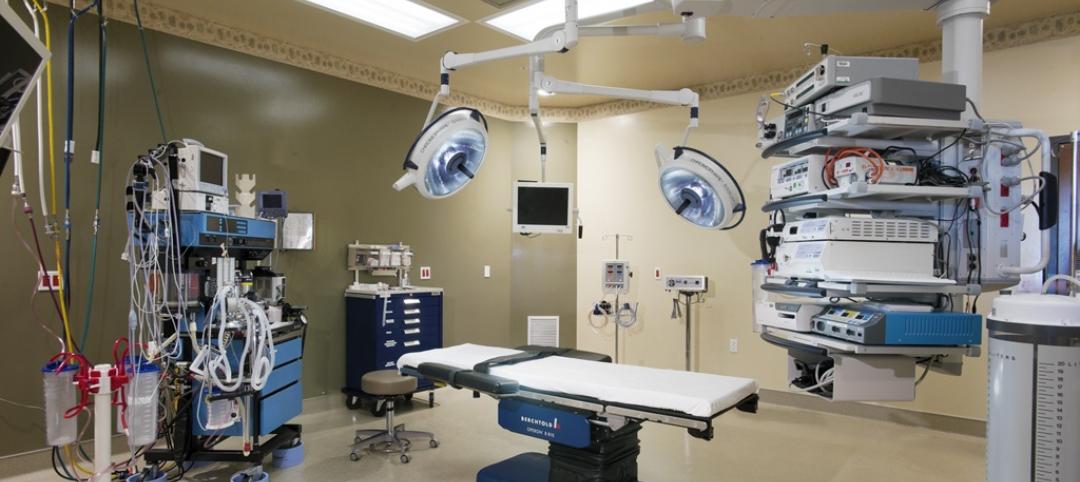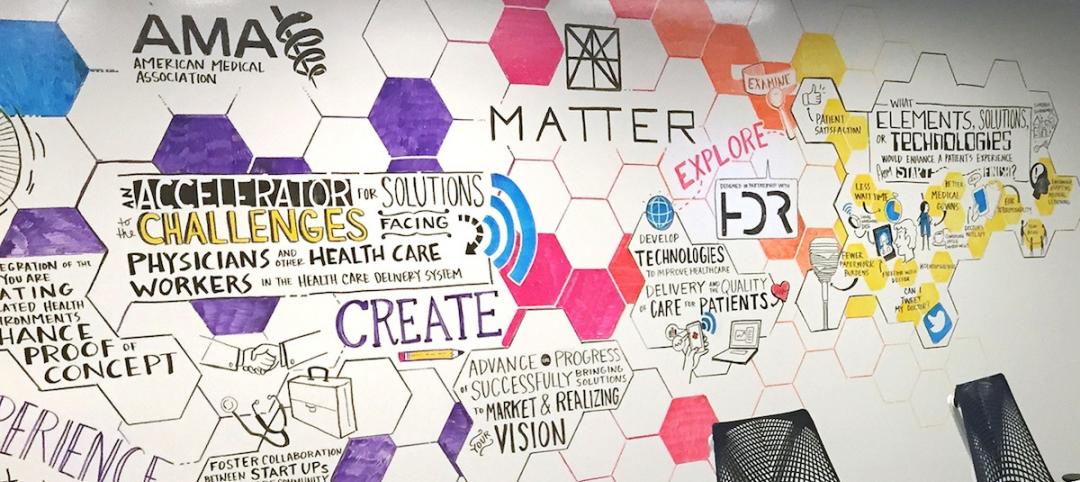Earlier this month, a real-estate development joint venture broke ground in downtown Grand Rapids, Mich., on the $85 million, 205,000-sf Doug Meijer Medical Innovation Building that is expected to drive innovation in life sciences through research, testing, and the commercialization of new therapies.
The project, which is scheduled for completion in in late 2021, is the result of a public-private partnership called Health Innovation Partners that includes Michigan State University (MSU), locally based GC Rockford Construction, and two Chicago-based firms Walsh Construction and Murphy Development Group. SmithGroup is the project’s lead architect.
Health Innovation Partners is leasing the land for the six-story Medical Innovation Building from MSU along the university’s so-called Medical Mile, next door to MSU’s 162,000-sf Research Center, which opened in 2017 and whose researchers concentrate on finding cures for cancer, Alzheimer’s and Parkinson’s diseases. The new building will include a 600-car parking structure. A third building is in the planning stage.

Over 250 guests, team members, and local officials turned out for the Nov. 18 groundbreaking of the Doug Meijer Medical Innovation Building in Grand Rapids, Mich.
MSU President Samuel L. Stanley, Jr., MD, stated during the groundbreaking ceremony that this latest project is one more step in Grand Rapids’ emergence as a national player in the health research and innovation space. Confirmed tenants for the Medical Innovation Building are the MSU College of Human Medicine, Spectrum Health, and BAMF Health, a biotech company focused on delivering AI-enabled medicine through molecular imaging and Theranostics.
Future tenants are likely to focus on cancer research, mental health, neurodevelopmental and neurodegenerative disorders, bioinformatics and artificial intelligence, digital and consumer-driven health technologies, and medical device development.
The new building is named after Doug Meijer, co-chairman of the supermarket chain Meijer, whose Meijer Foundation donated $19.5 million to the MSU Board of Trustees for the Medical Innovation Building’s construction.

Samuel L. Stanley, Jr., MD, President of Michigan State University (above), and Mike VanGessel, founder and CEO of Rockford Construction, a national construction and property management provider (below).

Related Stories
Healthcare Facilities | Apr 8, 2015
Designing for behavioral health: Balancing privacy and safety
Gensler's Jamie Huffcut discusses mental health in the U.S. and how design can affect behavioral health.
Building Team Awards | Apr 5, 2015
‘Project first’ philosophy shows team’s commitment to a true IPD on the San Carlos Center
Skanska and NBBJ join forces with Sutter Health on a medical center project where all three parties share the risk.
Healthcare Facilities | Mar 31, 2015
BIM and the changing procurement model for medical equipment in healthcare construction
BIM coordination has dramatically reduced change orders during the construction period. Unfortunately, it has had the opposite effect on medical technology integration, writes CBRE Healthcare's Julie Ford.
Healthcare Facilities | Mar 28, 2015
VA construction program ‘a disaster,’ says congressman
The VA construction program took more hits recently after the chairman of a congressional Committee on Veterans’ Affairs called an Aurora, Colo., hospital project “a disaster,” and a key VA official resigned abruptly.
Healthcare Facilities | Mar 23, 2015
Can advanced elevator technology take vertical hospitals to the next level?
VOA's Douglas King recalls the Odyssey project and ponders vertical transportation in high-rise healthcare design.
Healthcare Facilities | Mar 22, 2015
New Joplin, Mo., hospital built to tornado-resistant standards
The new hospital features a window and frame system that can protect patients from winds of up to 250 mph.
Healthcare Facilities | Mar 19, 2015
Grumman/Butkus Associates releases 2014 hospital energy and water benchmarking survey results
The survey results show that hospitals’ overall fossil fuel use has trended downward, but electricity use isn’t declining much.
Healthcare Facilities | Mar 18, 2015
Healthcare design partnership asks: What about the doctor?
HDR's Abbie Clary discusses the design of healthcare facilities and how they affect doctors.
Healthcare Facilities | Mar 16, 2015
Healthcare planning in a post-ACA world: 3 strategies for success
Healthcare providers are seeking direction on how to plan for a value-based world while still very much operating in a volume-based market. CBRE Healthcare's Curtis Skolnick offers helpful strategies.
Retail Centers | Mar 10, 2015
Retrofit projects give dying malls new purpose
Approximately one-third of the country’s 1,200 enclosed malls are dead or dying. The good news is that a sizable portion of that building stock is being repurposed.

















